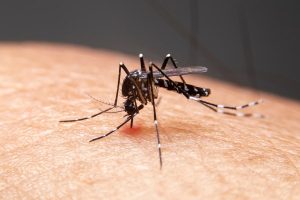 I realize it sounds crazy—like I’m telling you to dress your dog in festive holiday hats or throw Fido birthday parties every year—but it’s not. Brushing your dog’s teeth is actually a very important part of canine maintenance. Sure, dogs have existed for centuries without dental hygiene, so obviously they can live without it, but who are we kidding? There are lots of things we give our dogs that they can live without—but we do it to extend their life and increase its quality. And dental care should be added to every dog-lover’s list.
I realize it sounds crazy—like I’m telling you to dress your dog in festive holiday hats or throw Fido birthday parties every year—but it’s not. Brushing your dog’s teeth is actually a very important part of canine maintenance. Sure, dogs have existed for centuries without dental hygiene, so obviously they can live without it, but who are we kidding? There are lots of things we give our dogs that they can live without—but we do it to extend their life and increase its quality. And dental care should be added to every dog-lover’s list.
For the vast majority of dogs who have very foul breath, their halitosis is actually caused by periodontal disease—not the brand of food you feed them or that disgusting bone they’re currently chewing on that’s leaving those icky stains on your carpet. No—most cases of bad “doggie breath” are, indeed, cases of severe plaque build-up. And when this is left untreated, it can cause a bacterial infection, which can spread to your furry friend’s kidney, liver, heart and even brain.
To avoid this very real risk, it’s suggested that dog owners brush their pooch’s teeth 3-4 times a week. But don’t fret! This isn’t as difficult and traumatic an ordeal as it may sound.
First, go to your local pet store and buy doggie toothpaste. Don’t use your own Crest or Colgate—after all, dogs don’t spit and human toothpaste isn’t edible. I, personally, use TropiClean Tooth Gel. My dogs hate it, but it does a great job. I also use TropiClean’s Liquid Floss, which I’ll spray into their mouths after they eat.
You’ll also need a toothbrush, washcloth, a nubby-surfaced rubber cap or a piece of gauze wrapped around your finger. I use a doggie-sized toothbrush.
Next, position yourself and your dog in a way which gives you access to their teeth—especially those hard-to-reach back teeth, as that’s where most dogs experience dental problems. But also try to ensure your dog is comfortable.
I then put some toothpaste on either the toothbrush or washcloth and lift my dog’s upper lip. I move in a circular motion, like when brushing my own teeth. Again, pay particular attention to those back teeth. Once the top row is finished, move to the bottom. Apply small amounts of additional toothpaste when needed.
It’s really very simple and after a few times, your dog will start to get used to it. Also, feel free to try different toothpastes if you want—like I said, my dogs definitely do not care for the type I use, but its effectiveness outweighs their taste buds.

















